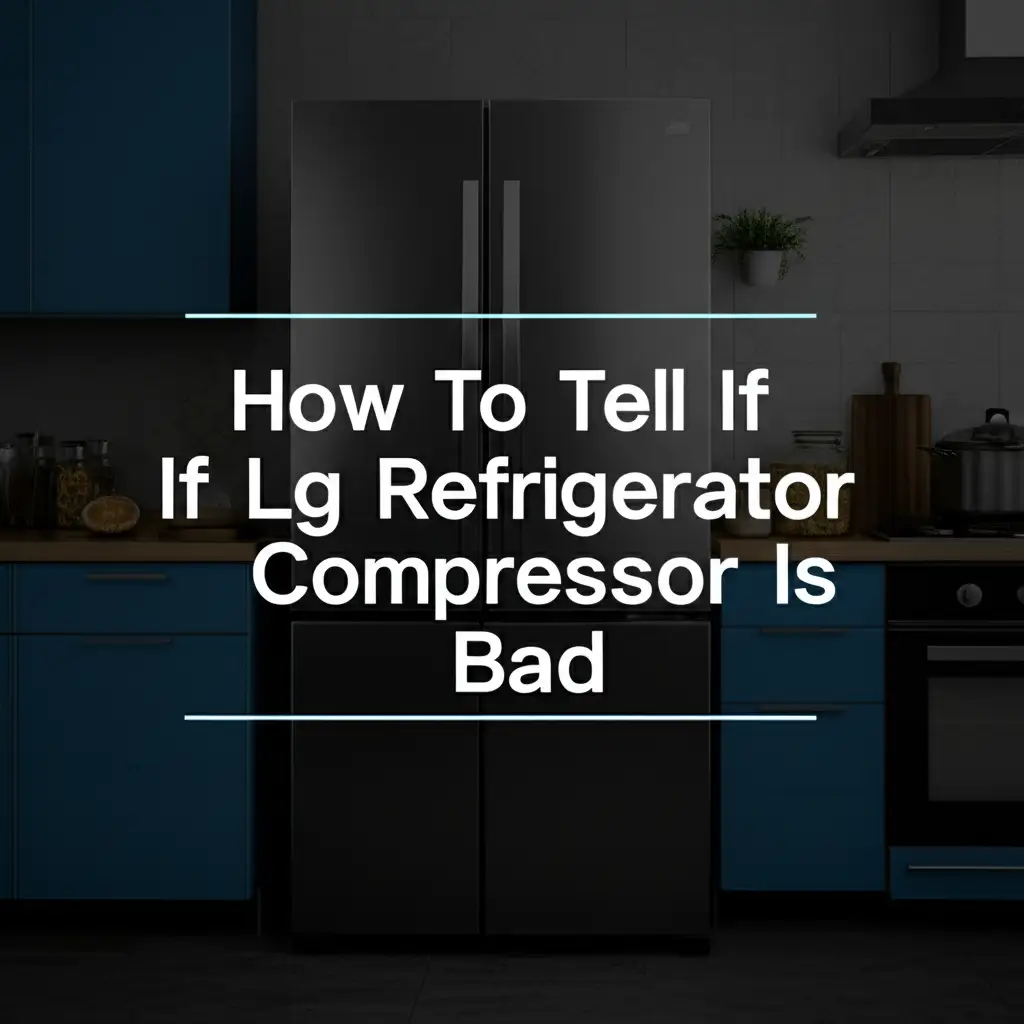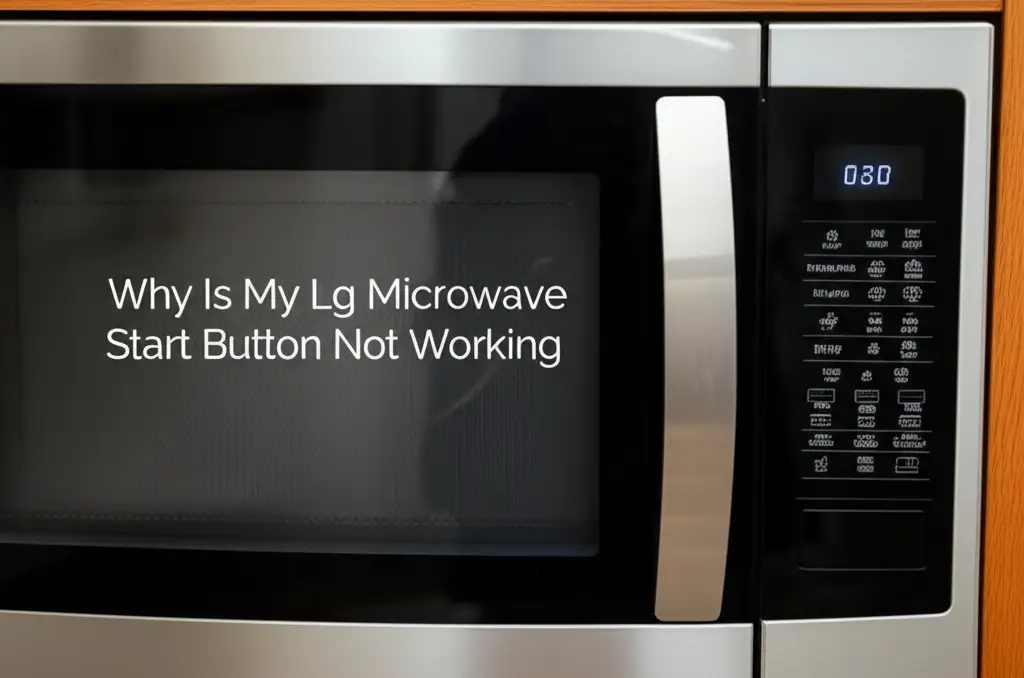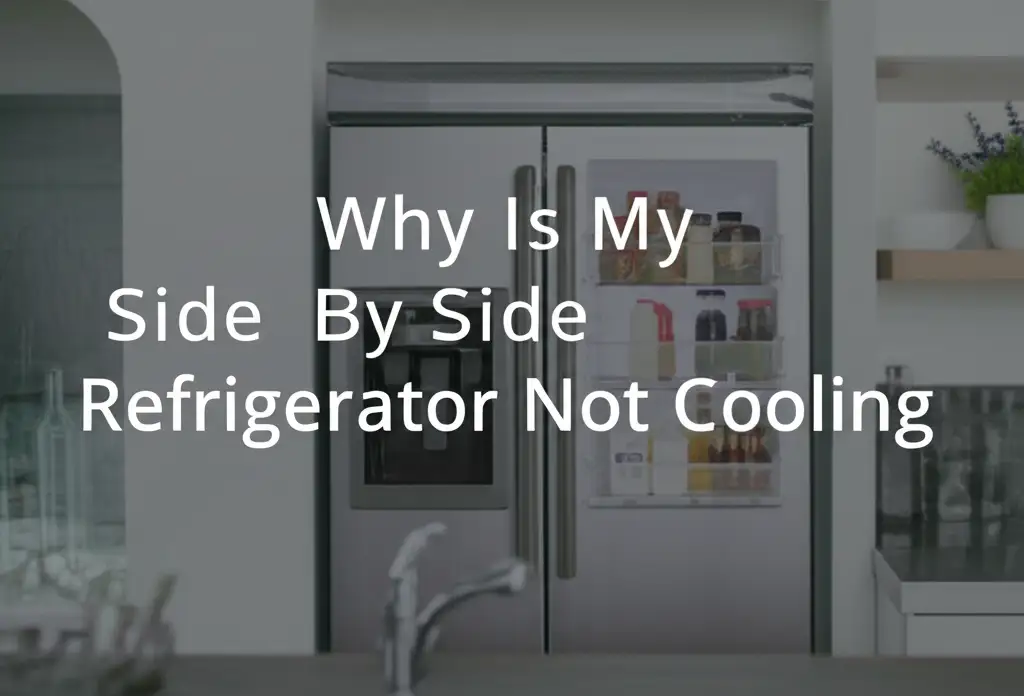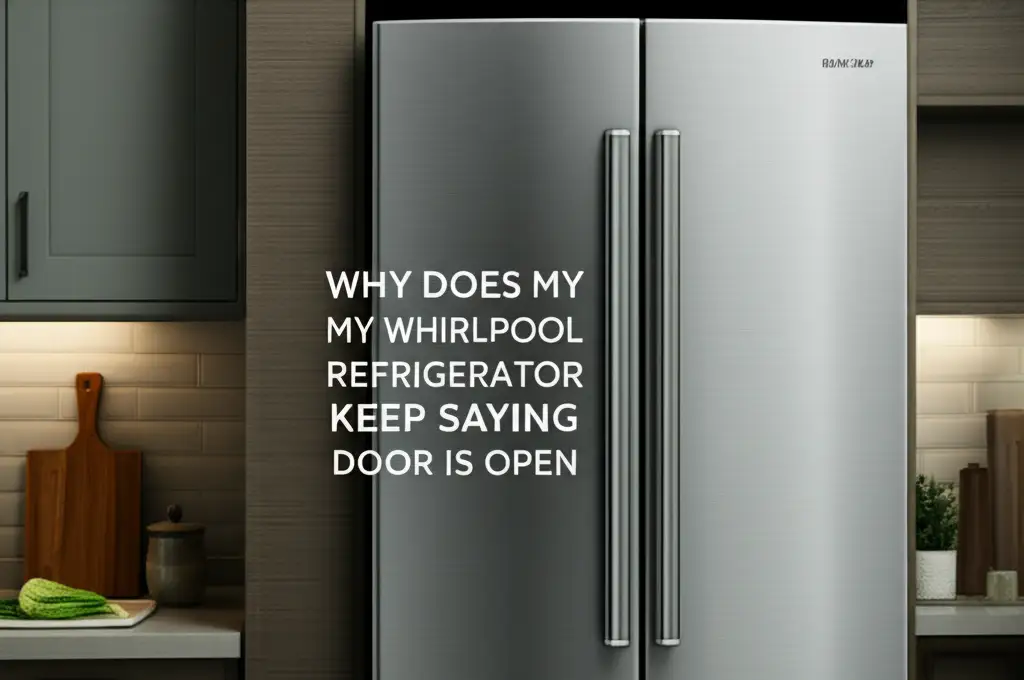· Todd Martin · Appliance Repair · 16 min read
Why Did My Lg Refrigerator Stop Working
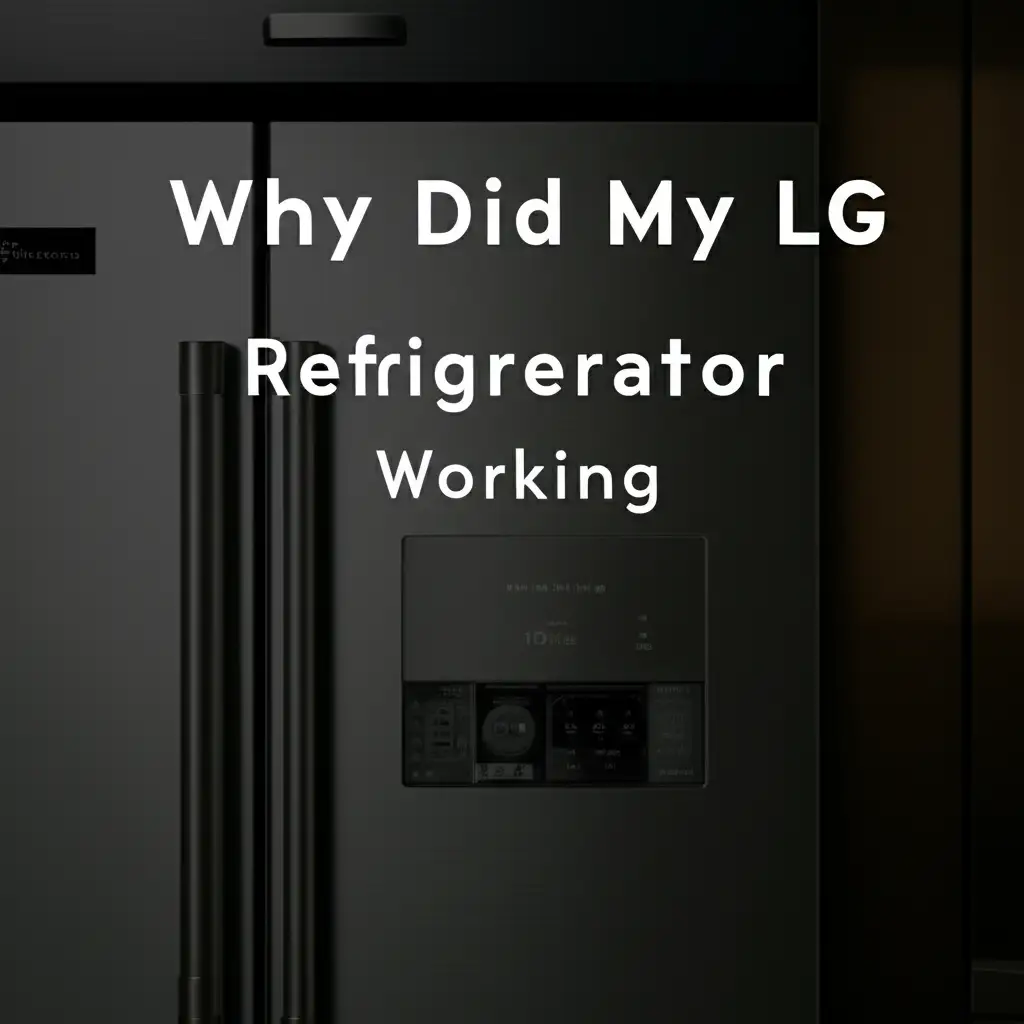
Solving the Mystery: Why Did My LG Refrigerator Stop Working?
There are few things more frustrating than finding your refrigerator suddenly silent and warm. If your LG refrigerator stopped working, you are not alone. This vital appliance holds our food, keeping it fresh and safe. When it fails, panic can set in quickly. I understand this feeling completely.
This guide helps you understand common reasons an LG refrigerator stops working. We will look at typical issues, from simple power problems to more involved component failures. You will learn troubleshooting steps to try yourself. This information helps you diagnose the problem. It also helps you decide if you can fix it or if you need a professional. Let’s get your LG fridge running again.
Takeaway
- Check power first: Ensure the refrigerator has power and is plugged in correctly.
- Examine components: Inspect condenser coils, fans, and door seals for issues.
- Understand defrost cycles: A failed defrost system can stop cooling.
- Listen for sounds: Unusual noises or silence can point to specific component failures.
- Know when to call a pro: Some repairs require expert knowledge and tools.
Why Your LG Refrigerator Stopped Working: A Quick Answer
Your LG refrigerator stopped working often due to power supply interruptions, a faulty compressor or start relay, dirty condenser coils, a malfunctioning fan motor (evaporator or condenser), or a problem with the defrost system. Less common issues include a faulty main control board or a defective temperature sensor.
Power Supply and Electrical Issues
When your LG refrigerator stops working, the very first thing to check is its power supply. It sounds simple, but a tripped breaker or a loose plug is a common culprit. I have seen many people overlook this basic step. Always start by verifying the electrical connection.
First, check if the power cord is securely plugged into the wall outlet. Sometimes, it can work its way loose. Then, look at your home’s circuit breaker box. Find the breaker labeled for your kitchen or refrigerator. If it is tripped, reset it. If it trips again immediately, you have an electrical issue needing a professional electrician. Also, test the outlet itself. You can plug another small appliance, like a lamp or a phone charger, into the same outlet. If that item does not work, the outlet itself is dead. This means the problem is not with the LG refrigerator itself.
Another less common electrical issue can be with the refrigerator’s power cord. Over time, cords can fray or get damaged. This damage prevents power from reaching the unit. Visually inspect the cord for any cuts or signs of wear. Never use a damaged power cord. Replace it if you find any damage. Always unplug the refrigerator before checking the cord. This protects you from electrical shock. Ensuring a stable power source is the first step in diagnosing any appliance problem.
Condenser Coils and Fan Maintenance
Dirty condenser coils can be a major reason your LG refrigerator stopped working effectively. These coils, typically located at the back or underneath your fridge, release heat from the refrigerant. If they are covered in dust, pet hair, or debris, they cannot dissipate heat properly. This forces the compressor to work harder, leading to overheating and eventual failure. Over time, this constant strain can cause the refrigerator to stop cooling completely. I always recommend checking these first.
Cleaning the condenser coils is a simple maintenance task. First, unplug your LG refrigerator for safety. Then, locate the coils. You might need to pull the fridge away from the wall or remove a kick plate at the bottom front. Use a vacuum cleaner with a brush attachment or a coil brush to carefully remove all accumulated dust. Make sure to get into all the nooks and crannies. I try to do this every six months to a year.
The condenser fan works with the coils to cool the refrigerant. It pulls air over the coils to help dissipate heat. If this fan motor fails or is obstructed, the cooling process becomes inefficient. You might hear a loud buzzing or grinding sound, or no sound at all from the fan area. To check it, ensure the power is off. Then, visually inspect the fan blades for obstructions. Spin the blades manually; they should turn freely. If the fan does not spin or makes a lot of noise, it likely needs replacement. A broken condenser fan often causes your refrigerator to stop cooling.
Evaporator Fan Motor and Frost Buildup
The evaporator fan motor is crucial for cooling the fresh food and freezer compartments. It circulates cold air from the evaporator coils throughout the refrigerator. If your LG refrigerator stopped working, meaning it is not cooling properly, but the compressor seems to be running, this fan could be the culprit. A common symptom of a failing evaporator fan is that the freezer might still be cold, but the refrigerator section feels warm. This happens because cold air is not moving into the main compartment.
Sometimes, the fan itself is fine, but ice buildup prevents it from spinning. This happens if the defrost system fails. When too much frost accumulates on the evaporator coils, the fan blades hit the ice, stopping the fan. You might hear a clicking or grinding noise from the freezer compartment before it goes completely silent. I have seen this issue many times. If you suspect this, you can manually defrost your refrigerator. Unplug the unit for 24-48 hours with the doors open. Place towels underneath to catch melting ice. After it completely thaws, plug it back in. If it works, the issue is likely with the defrost system, not the fan motor itself.
If manual defrosting does not solve the problem, the evaporator fan motor itself may be faulty. To test it, you would typically need to access the freezer’s back panel where the fan is located. With the power disconnected, you can try to spin the fan blades by hand. If they are stiff or do not spin freely, the motor bearings might be seized. A technician can test the motor’s electrical resistance to confirm failure. Replacing this motor can restore proper airflow and cooling to your entire LG refrigerator.
Compressor and Start Relay Issues
The compressor is the heart of your LG refrigerator’s cooling system. It pumps refrigerant through the coils, making the cooling process possible. If your LG refrigerator stopped working and is completely silent, the compressor or its start relay is often the reason. A failed compressor means no circulation of refrigerant, which quickly leads to a warm fridge. Compressors are complex and usually expensive to replace.
The start relay is a small electrical component attached to the side of the compressor. Its job is to provide a quick jolt of power to get the compressor motor running. If the start relay fails, the compressor will not start, even if the compressor itself is good. You might hear a faint click from the back of the fridge every few minutes as the relay tries and fails to engage the compressor. Or, you might hear no sound at all. Sometimes, you can even smell a burning odor if the relay overheats. This component is far less expensive to replace than the compressor.
Diagnosing a faulty compressor versus a faulty start relay requires some expertise. A technician can test both components using a multimeter. They can check the windings of the compressor for continuity and test the start relay for proper electrical function. While replacing a start relay can be a DIY task for those comfortable with appliance repair, replacing a compressor is a major job. It requires specialized tools to evacuate and recharge the refrigerant system. If you hear clicks but no hum, a bad start relay is a strong possibility. If you hear nothing, the compressor itself could be dead.
Defrost System Malfunctions
Your LG refrigerator has an automatic defrost system to prevent excessive ice buildup on the evaporator coils. This system typically includes a defrost heater, a defrost thermostat (or bimetal switch), and a defrost timer or main control board. If any part of this system fails, ice accumulates on the evaporator coils. This ice blocks airflow and prevents cooling, making it seem like your LG refrigerator stopped working. You might notice the freezer feels cold but the fridge section is warm, or ice on the back wall of the freezer.
The defrost heater melts the frost off the coils during the defrost cycle. If the heater fails, ice will build up. The defrost thermostat monitors the temperature on the coils and tells the heater when to turn on and off. If it fails open, the heater never turns on. If it fails closed, the heater could run too long, causing other problems. The defrost timer or the main control board manages when these cycles occur. A fault here means cycles won’t happen.
I once had a fridge with a similar problem, and it was the defrost heater. It was covered in ice, indicating it wasn’t turning on. You can try a manual defrost by unplugging the refrigerator for 24-48 hours. If the refrigerator starts cooling normally afterward, the defrost system is definitely the problem. This temporarily resolves the issue but does not fix the underlying component failure. Replacing defrost components usually involves accessing the freezer’s back panel, behind the evaporator coils. This repair often requires a technician, especially for proper testing of each component.
Faulty Thermostat or Temperature Sensors
The thermostat or temperature sensors in your LG refrigerator tell the compressor and fan motors when to turn on and off. They are the “brain” for temperature regulation. If your LG refrigerator stopped working and is not cooling, or it is cooling too much, a faulty thermostat or sensor could be the cause. These components provide temperature readings to the main control board. Incorrect readings lead to incorrect operation of the cooling system.
A common sign of a failing thermostat is inconsistent cooling. The fridge might be too warm one day and too cold the next, or simply not cool at all. Older refrigerators often have a mechanical thermostat knob inside the fresh food compartment. You can try turning this knob to different settings to see if it triggers any response from the compressor. If nothing happens, the thermostat itself might be broken.
Newer LG refrigerators often use electronic temperature sensors, or thermistors, instead of a mechanical thermostat. These sensors send resistance readings to the main control board, which interprets them as temperature. If a thermistor fails, it can send inaccurate readings. This can cause the compressor to run constantly, not at all, or cycle improperly. For example, if the thermistor reads the fridge as colder than it is, the compressor might not turn on. If it reads it as warmer, the compressor might run excessively, leading to possible overheating or over-cooling. Testing thermistors requires a multimeter and knowledge of the correct resistance values for various temperatures. This is usually a job for a qualified appliance technician. A professional can diagnose which specific sensor is faulty and replace it.
Main Control Board Malfunction
The main control board, often called the PCB (Printed Circuit Board), is the central brain of your LG refrigerator. It controls almost every function, from the compressor and fans to the defrost cycle and temperature settings. If your LG refrigerator stopped working and you have ruled out other common issues like power, fans, and simple defrost problems, the main control board might be the culprit. A faulty control board can send incorrect signals, or no signals at all, to critical components, causing the entire system to shut down or behave erratically.
Symptoms of a bad control board can vary widely. Your refrigerator might be completely dead, with no lights or sounds. Or, it might be partially functional, perhaps the freezer works but the fridge does not, or vice versa. Sometimes, the display panel might show error codes. I’ve heard stories where a fridge would randomly stop cooling and then start again without reason. This kind of intermittent behavior often points to a failing control board. You can try a hard reset on your refrigerator by unplugging it for 5-10 minutes and then plugging it back in. This sometimes clears temporary glitches in the control board’s software.
Diagnosing a main control board is difficult for the average homeowner. It requires advanced electrical testing and knowledge of the refrigerator’s wiring diagram. Often, it is a process of elimination; if all other components test fine, the control board is the likely suspect. Control boards can be expensive to replace. Therefore, it is important to get a proper diagnosis before committing to this repair. A professional appliance technician can accurately test the board and determine if it needs replacement. They have the tools and expertise to perform such a complex diagnosis.
Understanding Door Seals and Gaskets
Even if all internal components are working, a faulty door seal can make it seem like your LG refrigerator stopped working properly. The door gaskets create an airtight seal, keeping the cold air inside and the warm air out. If these seals are cracked, torn, or simply not sealing correctly, cold air will escape. This forces the compressor to run constantly, struggling to maintain the set temperature. Eventually, the compressor can overheat or fail from overwork, or the refrigerator just never gets cold enough.
You can perform a simple “dollar bill test” to check your door seals. Close the refrigerator door on a dollar bill. If you can easily pull the bill out, the seal is weak at that spot. Repeat this around the entire perimeter of both doors (fridge and freezer). Pay special attention to corners. You might also feel cold air escaping when you run your hand around the door edges. Over time, gaskets can harden or become compressed. This prevents them from forming a good seal.
Replacing door gaskets is usually a straightforward repair. You can often purchase replacement gaskets directly from LG or appliance parts suppliers. The process typically involves pulling off the old gasket and pressing a new one into place. Sometimes, you might need to use a screwdriver to remove screws holding the gasket in place. Ensuring a tight seal helps your LG refrigerator maintain its temperature efficiently. This reduces wear and tear on cooling components and saves energy. It also helps prevent your refrigerator from seemingly stopping its cooling function.
Compressor Overload Protector
The compressor overload protector is a safety device attached to the compressor. Its purpose is to shut off the compressor if it overheats. This prevents damage to the compressor. If your LG refrigerator stopped working, and you hear a clicking sound every few minutes but the compressor never actually starts, the overload protector could be cycling. This indicates the compressor is trying to start but cannot, perhaps due to a faulty start relay, a stuck compressor, or even the compressor being too hot from dirty condenser coils.
When the overload protector trips, it means the compressor is drawing too much current or is overheating. This is a sign of an underlying problem. It is not usually the protector itself that is faulty. It is doing its job. However, sometimes the overload protector itself can fail. It might trip prematurely, even when the compressor is operating normally. If this happens, the compressor will not start, and your refrigerator will not cool.
A technician can test the overload protector for continuity. If it shows no continuity when cool, it is faulty and needs replacement. However, if it tests fine, the technician will look for the root cause of the compressor issue. This could involve checking the start relay, the compressor windings, or ensuring proper ventilation around the condenser coils. Never bypass the overload protector. It is a vital safety feature. If your LG refrigerator is cycling on and off frequently, or not starting at all with clicking sounds, investigate the compressor area with help from a professional.
FAQ Section
How do I reset my LG refrigerator?
To reset your LG refrigerator, simply unplug it from the wall outlet. Wait for 5-10 minutes. Then, plug it back in. This “hard reset” can clear minor electronic glitches on the control board. It might resolve temporary issues that cause your LG refrigerator to stop working.
Why is my LG fridge warm but freezer cold?
If your LG fridge is warm but the freezer is cold, the most common culprits are a failed evaporator fan motor or a defrost system issue leading to ice buildup. The evaporator fan circulates cold air from the freezer to the fridge section. If it stops, cold air cannot reach the fridge.
What are signs of a bad LG refrigerator compressor?
Signs of a bad LG refrigerator compressor include the fridge not cooling at all, a clicking sound from the back without the compressor running, or the compressor running very loudly. You might also hear no sound from the compressor area when it should be running.
Can I fix my LG refrigerator myself?
You can fix some LG refrigerator issues yourself. Simple checks like power supply, cleaning condenser coils, or checking door seals are DIY friendly. More complex repairs involving electrical components, refrigerant, or internal system parts usually require a professional appliance technician for safety and proper diagnosis.
How often should I clean my LG refrigerator condenser coils?
You should clean your LG refrigerator condenser coils at least once or twice a year. More frequent cleaning is needed if you have pets that shed a lot or if your home is particularly dusty. Regular cleaning prevents overheating and extends the life of your refrigerator.
Conclusion
Finding your LG refrigerator stopped working can be quite a shock. However, many common issues have straightforward solutions. I hope this guide helps you understand why your LG refrigerator might have stopped working. We looked at everything from basic power problems to more complex component failures like the compressor or main control board. You now have a better grasp of the common problems and how to approach them.
Always start with the simplest checks, like power and plug connections. Then, move to routine maintenance tasks, such as cleaning the condenser coils. For more involved diagnostics, like testing specific components or dealing with refrigerant lines, consider calling a professional. Safety is paramount when working with appliances. If you feel uncomfortable, or if the problem persists after basic troubleshooting, do not hesitate to contact a qualified appliance repair technician. They have the tools and expertise to accurately diagnose and fix your LG refrigerator. Regular maintenance can often prevent these issues. Take care of your appliance, and it will serve you for years.
- LG refrigerator repair
- fridge not cooling
- LG fridge troubleshooting
- common fridge problems
- appliance repair guide


